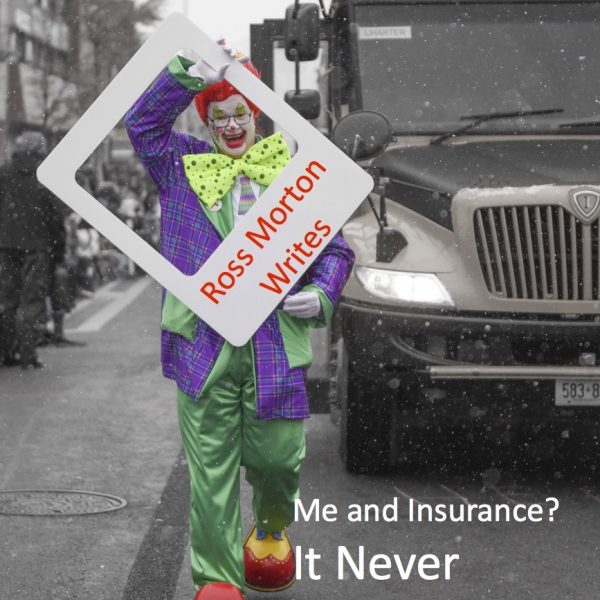Another in the series of articles encouraged by Steve Carlson of Marketing Options. The industry was full of concern for whom and what were reinsurers. I was doing several speeches across Canada on the subject of reinsurance and retrocession. Steve pushed me to give an overview of the industry seldom seen by the distributor. I tried to write an article that outlined how it worked and also strived to be neutral as to which reisnurer was best (there was no best at that time, but there was mediocrity).
Distributors wanted to know why their product manufacturer (insurer) would use a certain reisnurer and thus not have access to the flexibility of many reinsurers. Times changed by the end of the 1990’s most companies used multiple reinsurers to allow for maximum capacity and greatest flexibility in product and risk selection.
Ross
2004-04-07
Marketing Options
November 1990
If you have been in the life insurance business long enough you can probably remember when you did not know the word reinsurance existed. In those days, if you were employed by a reinsurer, you told the person next to you on the plane that you were an insurance agent or that you were calculating random but known theories of mortality. The first was to ward of unwanted conversation, the second to attract their probing dialogue. Here we are in 1990 with the reinsurers so far out of the closet they almost refuse to go back in even when encourage by insurers. Every agent has heard the word ‘reinsurer’ or those infamous words ‘the reinsurer has declined’.
The life reinsurance industry environment has been one of the unprecedented growth and change that was not predicted in the 1970s. The number of competitors grew as the exclusive reinsurers with head offices or ownership outside of Canada came to dominate those local companies who historically touched on reinsurance via reciprocity (the gentlemanly exchange of business between companies). At the same time, local but smaller Canadian exclusive reinsurers aligned themselves with European or American reinsurers to provide a capacity equivalent to the larger international participants.
Now the reinsurance business in Canada is comprised of about 20% of the sums insured written in a year or the astronomical amount in 1989 of over $15 billion. The reward, or reinsurance premium involved, however does not do justice to the amount of risk since it hovers around the 4% figure. The insurance industry is intelligent in that it reinsures as much risk as possible but is stingy with its premiums.
Mergers and acquisitions that are transpiring in Europe as well as the contraction of the Canadian industry makes for some interesting scenarios that are purely speculative. For example, will the reinsurance industry decrease from over 100 players internationally to a dozen or so reinsurance conglomerates? Will the Canadian insurance industry shrink to 40 companies, or twelve, if you listen to the real pessimists?
The issue of AIDS pricing was truly a means of increasing the charge for reinsurance risk taking – a direction that was surely needed. There was no margin in the reinsurer’s price to cover the additional mortality due to the virus. A healthy market requires a competitive price from the company to the consumer and a competitive price from the reinsurer to the company.
When the final tally comes in the industry has many competitors for the reinsured volumes available. The competitors are one thing above all else, competitive. (The market is only marginally increasing while reinsurers need large volumes to sustain them through the 1990s) A ceding company can coerce a lucrative deal with the reinsurer it can in turn choose one of several alternatives: give the agent higher commissions; lower the price to the potential policyholder; or pocket the margin as profit for its owners. Which is most often chosen is as easy for the novice to pick as it is for the most seasoned veteran of the insurance industry.
The price the reinsurer charges are, in a net sense, much thinner than the price in the rate book. The reinsurer can be charging simply mortality (approaching zero in the early years for some models) with modest additions for expenses (usually zero – the loss leader theory) and profit (try for bank interest rates, if you dare). What the reinsurer is alluding to is the theoretical decree that only the original ceding company has higher expenses and high profit assumptions.
The second most important element in marrying a reinsurer is price… The third most important element is, you’ve guessed it, price.
As a company moves down the list, which does become repetitive, you do reach other elements that go into the decision making process that ends with choosing a reinsurer for the next twelve months. No where on the list is there an item called ‘client relations’. About the closest is the tried and true category of head office underwriting support. This is ranked number one when there is a problem but falls to eighteenth place when all is quiet on the difficult case front.
The support that an agent needs from the underwriter on the difficult case is beyond price because it often has a value that does not equate to dollars but only to peace of mind and confidence. If the agents are well serviced they are less likely to get the unpleasant surprise that a competitor has found a better price. The agent, who is at the forefront, needs to know that the offer he is presenting to the client is the best given the myriad of factors influencing an applicant’s insurability. The reinsurer provides support to that head office underwriter by ensuring the availability of the latest risk classification material. If the case is outside of the normal, then quick, concise assistance should be available to that underwriter.
Traditionally, the support of the reinsurer’s underwriting department was closeted away well beyond the agent’s group. It was possibly considered wrong to have the reinsurance underwriter know anything about the world of the agent. The ivory tower of the reinsurer’s underwriter even had a moat around it. Today we have witnessed these underwriters boldly leaving the tower to venture into the camps of the producers to actually see and hear the realities of today’s jumbo cases and somewhat rated lives. All of a sudden there is an understanding, not total yet, but growing. Agents have even been known to now befriend a reinsurer and vice versa.
Support for the unusual case, be it on a complex financial issue or a specific medical problem, is of utmost importance when choosing the reinsurer. If it is ignored the agent is left with not 95% of cases being issued standard but maybe 85%. That extra one in ten could be costly. To balance the accolades that a great reinsurance underwriter brings to the agent/ceding company relationship is the worry by some head office underwriters that it occasionally goes too far. The reference, of course, is to the reinsurance underwriter who may overstep his role and both jeopardize the integrity of the ceding company underwriter or make and unfulfillable promise to an agent of group of agents.
Does every other element pale in comparison to the foregoing? Yes, says the underwriter. Putting the big picture together, the price and underwriter factors are probably the most important issues between company, reinsurer and agent. The fact that the reinsurer has terrific administrative systems and people is important to the company but a non issue to the agent. If the flow of risk and premium between reinsurer and company is fouled up rarely could it impact the customer or agent.
The unfettered commitment of the reinsurer to the life reinsurance business and to the particular company is an element to consider but of only trivial consequence to the agent. The agent should have the confidence to the reinsurer is involved for the long term and takes time to stay abreast of agent issues, but that’s it.
There are two remaining elements a life company considers when selecting a reinsurer and both could be at the top of the list but both could be deemed so fundamental that they are present without being listed. The two elements are related since very rarely do you have the one without the other. Top performing people work in an environment that knows the financial stability is behind them since it is they who risk personal reputation by implying something that is not there. Financially stable reinsurance companies can attract the best people to protect that stability and enhance it. You simply can’t have on without the other. The marriage of the best reinsurance people with the mightiest of reinsurance giants, either stand alone companies or networks of diverse interest, gives peace of mind to the ceding company.
There has been much said about the financial weakness of the life reinsurers. Unfortunately most of the rumor is make believe or wishful thinking by in secure individuals or dubious competitors. No life reinsurer was involved in the reinsurance difficulties of the non life industry. As a rough guess, less than 4% of Canadian reinsurance volume is with unlicensed or unaccredited reinsurers. The last two or three million of $30 million case must be covered somewhere. To the best of my knowledge, the primary reinsurers operating in Canada are all federally licensed or accredited, thus meeting the financial requirements and scrutiny of the Department of Insurance and it’s army of auditors.
Go with a reinsurer to lunch and draw your own conclusions about their value to the industry. It would be hard to imagine anyone concluding anything other than they are great people doing an exemplary job in a confusing industry. Remember to base your judgment on price (who pays the bill?), price (who offers to pay the bill?), price (the restaurant chosen), the underwriting support (the number of times the word ‘standard’ is used), administration (did the reinsurer eat lunch using utensils in the proper order?), commitment ( the number of times he/she fell asleep), financial stability (did the maitre’d politely return the reinsurer’s credit card and ask for cash?) and people (was it a real smile or was it painted on?).

